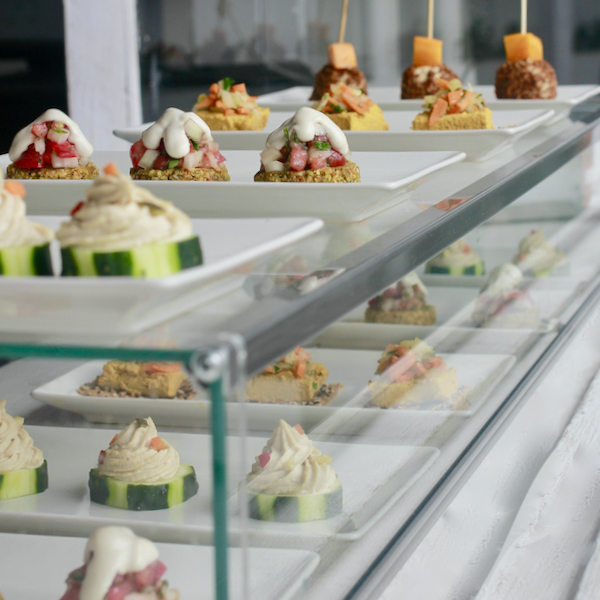
Why, suddenly, all this interest in fermentation? Many of the foods we usually eat are fermented products such as bread, cheese, chocolate, coffee or wine. It is true that recently we are adding to our diet fermented vegetables such as miso, sauerkraut, kimchi and in our case, vegetable cheeses (look at our Pine Nut RAW Parmesan recipe). The answer lies in the powerful healthy properties of fermented vegetables. And, for us, in the fact that making your own foods at home is a form of food activism, and a fun one. To discuss all these issues we have produced this report with two videos and a very special guest, the master of fermentation: Sandor Katz.
Sandor Katz (New York, 1962) is the author of The Art of Fermentation and Wild Fermentation (Chelsea Green Publishing), already two classics in food literature. The quotidian cooks enjoyed (and recorded) a conversation with him at the Basque Culinary Center in Spain during the Fermentation Symposium that took place last November.
Sandor, who defines himself as a fermentation activist insists on the benefits of fermented vegetables and the simplicity of home-making them. He presents the concepts and processes behind fermentation in ways that are simple to all and at the same time in-depth enough to provide greater understanding for experienced practitioners. Check it for yourself in the summary of the interview he gave us.
Interview with Sandor Katz. BCC, Donostia, 2016
Fermentation at home is easy, safe and it is the best way to enjoy fermented vegetables. Contrary to what most people think, to make sauerkraut or preserved lemons at home we just need the ingredients, salt and some basic techniques of hygiene and food preparation. Ah, and time! Since the nutritional and culinary properties of the vegetables develop in successive steps once we close the jar.
Sandor shows us how to begin with passion and detail in his Fermentation of Vegetables Workshop that you can see next. He prepares his legendary sauerkraut step by step while giving us the keys to making homemade preparations. He also explains the types of vegetables we can ferment, the techniques of preparation of vegetables, the role and amount of salt and safety measures to monitor the whole process.
Fermentation of Vegetables Workshop. BCC, Donostia, 2016
Once you start fermenting at home, you will not stop. Results are spectacular in yield, taste and culinary possibilities. First try the sauerkraut after five days of fermentation, but … do not eat it all !, remember that it keeps developing and its properties change over time. After a month, you will have a sauerkraut with less texture but more flavors and three months later a complex product in taste and nutritional properties.
Do you want to know more? Read The Art of Fermentation (Chelsea Green Publishing) by Sandor Katz. the most comprehensive guide to do-it-yourself home fermentation ever published. Full with amazing recipes it is primarily a compendium of practical information: how the processes work, parameters for safety, techniques for effective preservation and troubleshooting.
Enjoy it, start working on it and keep an eye on The Quotidian Cook, because next we are posting our own recipes of fermented foods!










